Ocean Plastic is Destroying a Remote Nature Reserve off Norway
Mausund and the Froan Nature Reserve are located in an archipelago far out to sea along the Trøndelag county coast, but they are not exactly pristine.
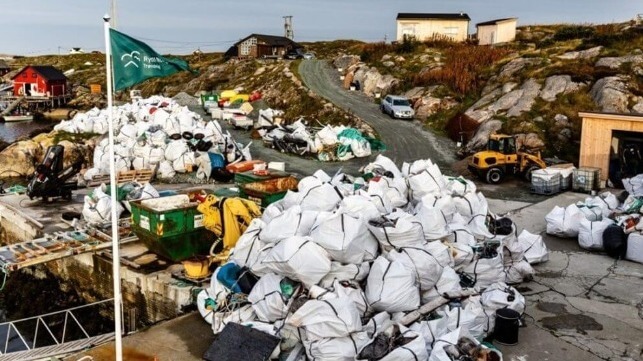
[By Steinar Brandslet]
Mausund and the Froan Nature Reserve in Trøndelag have had notable problems with plastic litter for many years. Professional clean-up work began a few years ago with the removal of marine litter in the archipelago’s islands and islets. But no one knew how big the task would turn out to be.
“The clean-up work began in 2017. The crew couldn’t have imagined how bad it was,” says Hilde Ervik, a senior lecturer at NTNU’s Department of Teacher Education.
It turns out that the outer island coastal areas of Trøndelag are among the most polluted in the country. NTNU is conducting a research project that addresses the plastic pollution of the reserve. The results were published in Science of The Total Environment.
A research group from NTNU’s Department of Biology, including Martin Wagner and Laura Monclús Anglada, collects marine plastic waste from ponds in Froan. Photo: Hilde Ervik, NTNU
Plastic trash rides ocean currents
Due to the ocean currents around this mid-coast archipelago, Mausund and the Froan Nature Reserve are particularly exposed to marine litter washed ashore here. A branch of the Gulf Stream swings inward, and the islands are located in the middle of the Norwegian coastal current. Much of the trash travels from afar.
In some surveys, around 70 percent of the plastic has been registered as coming from abroad, says Odd Arne Arnesen, general manager at Mausund Field Station.
“But that doesn’t mean that the responsibility primarily rests with people in other countries. A lot of the plastic waste here comes from shipping and local industry, like ropes, fishing gear and building materials. It’s not just plastic that drifts ashore,” Arnesen says.
Field station takes on a lot of the work
The Eider AS Mausund Field Station company has 16 employees. They have a collaborative agreement with NTNU for research and fieldwork.
This is the source of coastal renovators who are more or less out collecting plastic rubbish on the islands on a daily basis. Staff also travel around to schools and talk about the challenges that plastic in the world’s oceans brings with it.
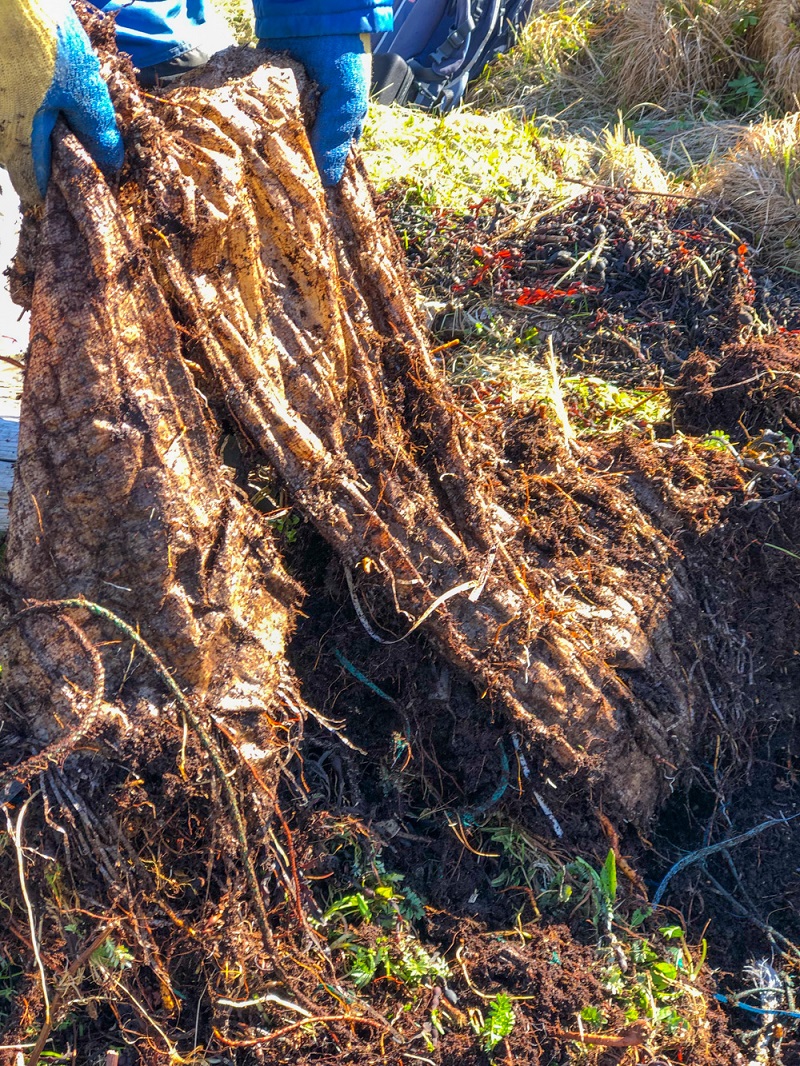
Plastic infiltrates the soil layer and gets harder to get rid of the longer it is in the ground. Photo: Mausund Field Station
“The clean-up crews have collected a total of 5,500 cubic meters . . . of marine waste since we started in 2017. Then add to that 14,200 kilos of oil, chemicals and other liquids that were collected,” says Arnesen.
“We also have great help from volunteers at various times. Since the start, close to 1,500 volunteers have worked with us. This is a big task with a lot of challenges, but we believe in it. It helps that everyone involved in the project feels that we’re contributing something positive to the environment,” says Arnesen.
The volunteers include school children, students, municipal and county politicians, tourists, pensioners, teams and organizations and a couple of cycling clubs.
Shipped to the mainland
Most of the waste is brought ashore to Mausund, where recyclables are sorted out and the rest is collected for further transport to Trondheim.
The volume of trash has also increased as the clean-up process has become considerably more efficient. In the last couple of years, the Norwegian Coast Guard has been responsible for a good part of the transport to Trondheim, but starting this year trucks have been doing the transport.
All the waste that cannot be recycled—and that’s most of it—goes to be incinerated at Statkraft Varme’s district heating plant at Heimdal in Trondheim.
“This isn’t the best possible sustainable solution, and we hope that we’ll eventually be able to put better solutions in place with NTNU,” says Arnesen.
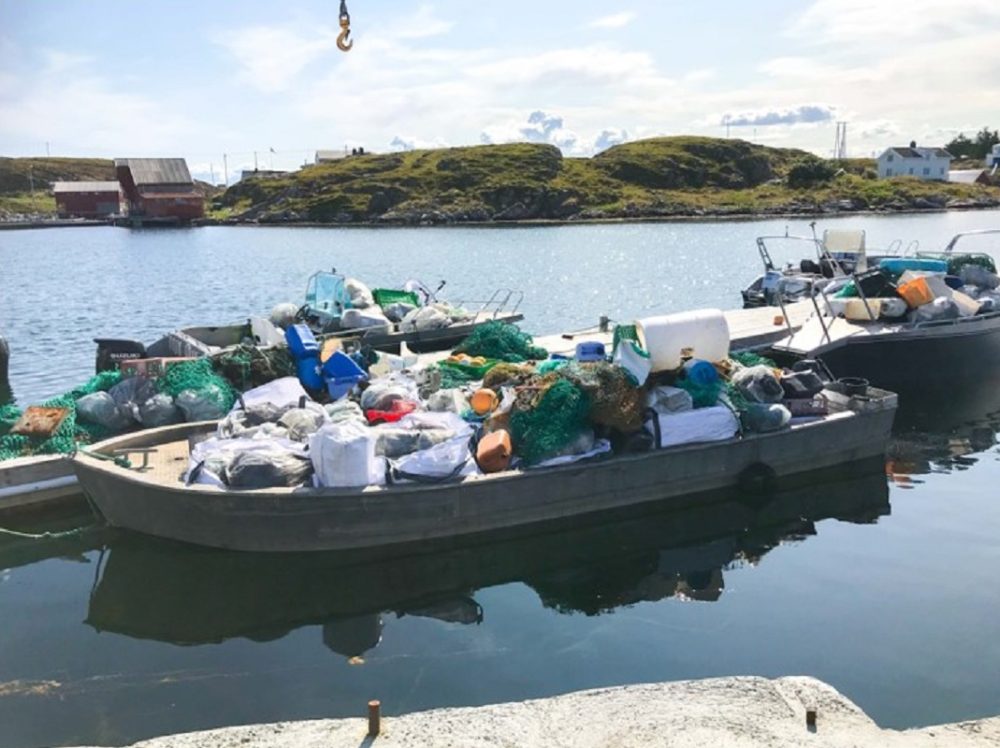
Hand-collected trash is gathered at the Mausund field station for disposal on the mainland (Mausund Field Station)
Huge soil samples
The soil here is so contaminated with plastic that it doesn’t make sense to take small soil samples. Nor would that be easy, given how tangled and ingrown the plastic, ropes, fishing nets and trawls are with roots, soil and vegetation.
The researchers have instead collected 13 huge samples of 27 liters each that they have examined. “These samples contained anywhere from 3 to 72 per cent plastic—on average around 25 per cent,” says Ervik.
Some of the samples thus contained more than two and a half times more plastic than soil.
The plastic products slowly degrade, and over time they turn into tiny pieces of microplastic and nanoplastic. “We calculated that one soil sample of 27 liters, containing 25 per cent plastic, would break down to around 530 million microplastic particles,” says Ervik.
That’s just over half a billion microparticles. How this might affect our health is not yet known. The impact of micro- and nanoplastics on health and life on the planet is still being studied.
But plastic pollution is a threat to wildlife in the nature reserve. You won’t find earthworms in the most contaminated soil, for example. That’s a bad sign.
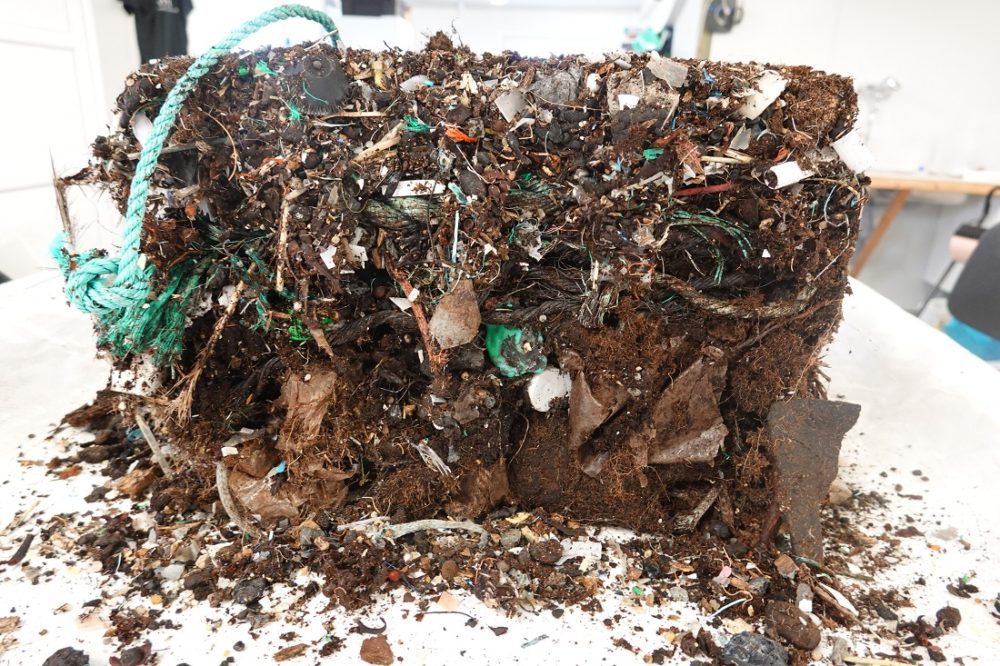
A 27-liter soil sample. The plastic from this sample will eventually break down to more than half a billion microplastic particles. Photo: Hilde Ervik, NTNU
Freshwater sources for birds and animals becoming non-potable
However, plastic does not just stay in the soil. You also find it in the freshwater reservoirs and ponds on the islands. A lot of the plastic that ended up here has been lying there for decades.
“Drinking water for birds and animals is heavily contaminated. This has to be a priority for clean-up,” says Ervik.
New research has documented that plastic leaches environmental toxicants into the water. They include various additives that are added to the plastic to give it different properties such as strength, flexibility and colour, but contaminants also adhere to the surface of the plastic on their journey in the ocean currents.
Researchers from NTNU have taken samples from these lakes, but the results have not yet been published.
Have to start fresh
So what can be done to clean up all the waste in the nature reserve? Well, first of all, the marine litter needs to be cleared away before it goes too far.
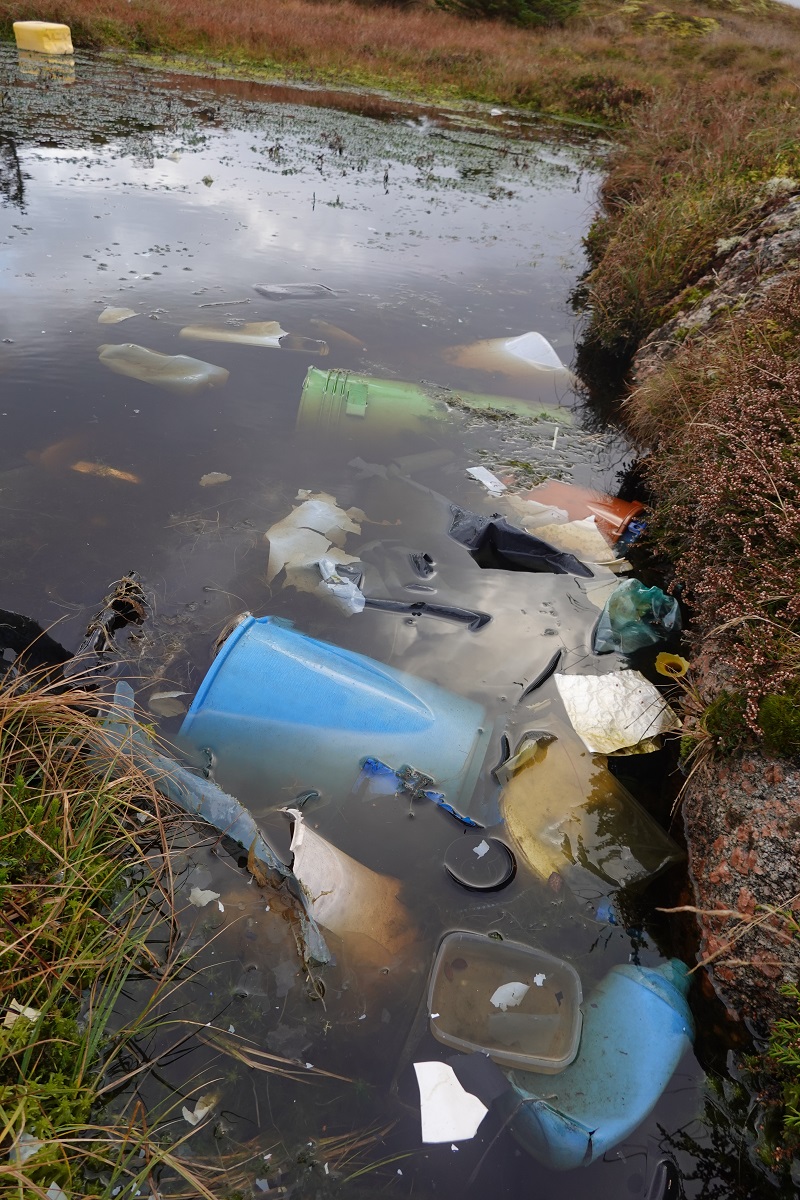
Many freshwater sources for birds and animals on the islands are contaminated with plastic. Photo: Mausund Field Station
“The annual influx of rubbish has to be cleaned up to prevent it from becoming buried under vegetation,” Ervik says.
Picking up the trash once it has worked its way into the ground is much more difficult, actually almost impossible, than when it is just lying on the surface.
But even getting to the trash on the surface is not enough. Some places are so polluted that it’s not practically possible to clean them up by hand. The plastic leaches into the soil layer, too, so it’s not just what you see that is the problem.
Still doing clean-ups by hand
“In a lot of places we’re seeing problems with doing clean-ups only by hand. The soil containing plastics needs to be cleaned up mechanically if the areas are to be returned to a clean state. All the biological material is displaced by plastic pollution in these places. Research supports that places like this have to be completely cleaned up so that habitats and species can re-establish themselves afresh when the plastic is removed,” says Arnesen.
Arnesen is calling for greater efforts from the authorities and industry to get on the offensive with the clean-up of marine plastic waste on the islands, in ponds and in the soil. “We need greater expertise, new technological solutions and a completely new sustainable handling of the entire process,” says Arnesen.
Unpredictable economy
The biggest challenge now is that the project is not financially predictable.
The Norwegian Environment Agency supported the clean-up work in the first few years. Starting last year, the clean-up work has been supported by the Norwegian Retailers’ Environment Fund, with a small fee per plastic bag that customers buy at the store going to the fund. The commitment to the project made by the Retailers’ Environmental Fund has contributed to far greater activity with more involved employees and the collection of much more trash.
The agreement with the Retailers’ Environmental Fund is valid for another two years, and the goal is to clean up almost 50 percent of the archipelago in southern Trøndelag. This is good, but the environmental fund alone is not enough.
“One- to three-year agreements with the investments we have in materials and equipment aren’t good. We have a really motivated staff, but the lack of predictability is a strain for everyone,” says Arnesen. “We’ve gained some experience as a team since we started and realize that if we’re to succeed—both in terms of becoming more efficient and getting on the offensive with the pollution—we have to think big, really big.”
Lots of talk, but money and technology needed
“In the big picture, the (Norwegian) government and the UN are talking about how pollution will affect the continued existence of the world’s oceans, yet after several years of clean-up work, we’re still doing 100 percent of it manually. That can’t continue—we need to go to work with new technological and industrialized solutions,” Arnesen said.
Several academic groups within NTNU are getting involved. Arnesen believes it will be possible to solve several of these challenges at the same time.
“Regardless of the future solutions, this clean-up is going to cost money, and we’re seeing that the more efficient we become, the more it costs. Taking a bigger picture view, we’ve managed to pollute the world’s oceans so much that we can now see irreversible damage in several places. And we’ve managed to do this in just under 60 years,” says Arnesen.
This is not anything we’ll manage to clean up overnight; it will probably take decades. And, he believes, this fact supports the idea that we need to think big when it comes to technological solutions.
This article appears courtesy of Gemini News and may be found in its original form here.
The opinions expressed herein are the author's and not necessarily those of The Maritime Executive.
